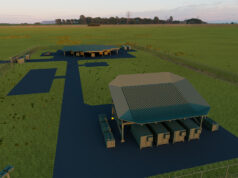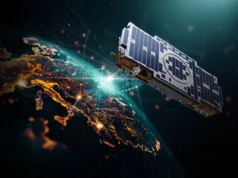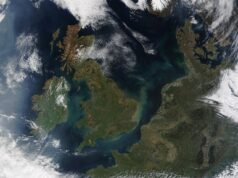Raytheon NORSS UK-based space domain awareness specialist has been awarded a contract to provide the UK Space Agency with Space Surveillance and Tracking Services Data (SST) in low-Earth orbit (LEO) for Resident Space Objects (RSO).
Under this contract, Raytheon NORSS will use its ground-based Low-Earth Orbit Camera Installation sensors, known as LOCI, to routinely collect observation data on objects in LEO, including space debris, defence assets and commercial satellites.
This data will help expand and improve the UK’s sovereign space domain awareness capabilities and enhance the UK Space Agency’s ability to keep assets in orbit safe from possible dangers, such as collision or fragmentation events.
Raytheon NORSS has recently increased the international deployment of LOCI in order to provide a wider, more comprehensive picture of objects in LEO. The LOCI sensor network will be operated out of multiple locations in the UK, U.S. and Australia.
“As the number of objects in LEO continues to increase, it’s vital that our customers know what is happening with and around not only their assets, but also in the space environment,” said Sean Goldsbrough, head of Raytheon NORSS.
“Our recent international expansion of LOCI will provide the UK Space Agency and MOD with the high-quality, timely and assured SST data they need.”
This announcement comes following news that Raytheon NORSS has been selected, alongside intandem, to produce a 10-year strategy for the UK Space Agency’s National Space Operations Centre (NSpOC).
A key objective of the centre, which is set to open in April 2024, is to enable the UK to deliver on its space domain awareness responsibilities.











All we need now are some space based assets to track. All the promise of UK ISR satellite network seems to have gone very quiet.
Have you never watched the series U.F.O. ? 😂
S. I. D is being dusted off from it’s hanger at Elstree, sorry, “Harlington” studios as we speak 😉
Quiet costs Money, lots of Money go take at the composition of the U.K. Defence Budget sometime. And then join the……..s.
Just found an article from janes, first Minerva satellite to launch in summer 2024 with last by 2026.
I’m quite intrigued as to how Zephyr 8 / Haps development is going.
I was wondering what assets we had until I watched the Bond Moonraker film from 1979..those were the days 😉
Appears having a space cadet for the British Minister of Defence is coming up trumps.
Hi M8 Have you any idea how the HAPS / Zephyr 8 project is going ? I know 1 pranged last year after 64 days aloft but in itself that is a hell of an achievement for an unmanned, solar powered, light weight and cheap recce platform.
He’s a wide boy from Watford. And he’s just scrapped for spares 30 of our T1 Typhoons to pay for it
Come on David. They’ve been destined for the scrap heap for two years so actually it’s down to Ben Wallace. Either way they shouldn’t be going.
How impressive of the MoD, that after having spent £billions on the UK Space Agency’s National Space Operations Centre – which opens in April next year – only now do we work out that it needs a 10 year strategy. That only Raytheon can produce. And no mention of the contract value
Which centre is that mate? Do you mean RAF Space Command?
Don’t think so – the UK Space Command and the UKSA will launch the National Space Operations Centre (NSpOC) in April next year – though I’m not aware of actually where it will be
This initiative will involve building a new, national, ground-based Space Domain Awareness (SDA) sensor in Cyprus tho
That’s why I clarified. An NSPoC has existed for years down the hole at Naphill, within the existing NADOC that was constructed about 1985 timeframe
They reinvent the wheel all the time and call it new. So I was curious whether this is an actually physically new build, an update to the existing, or a bout of typical MoD spin.
Assume the sensor is the previously reported Starbrook that replaces existing at Troodos.
Lots of silence in the one web PNT/GPS service, that seemed promising but not much news since. There was something about a test v2 satellite with PTN is that likely to happen?
Ground based cameras in the UK, that will work well!